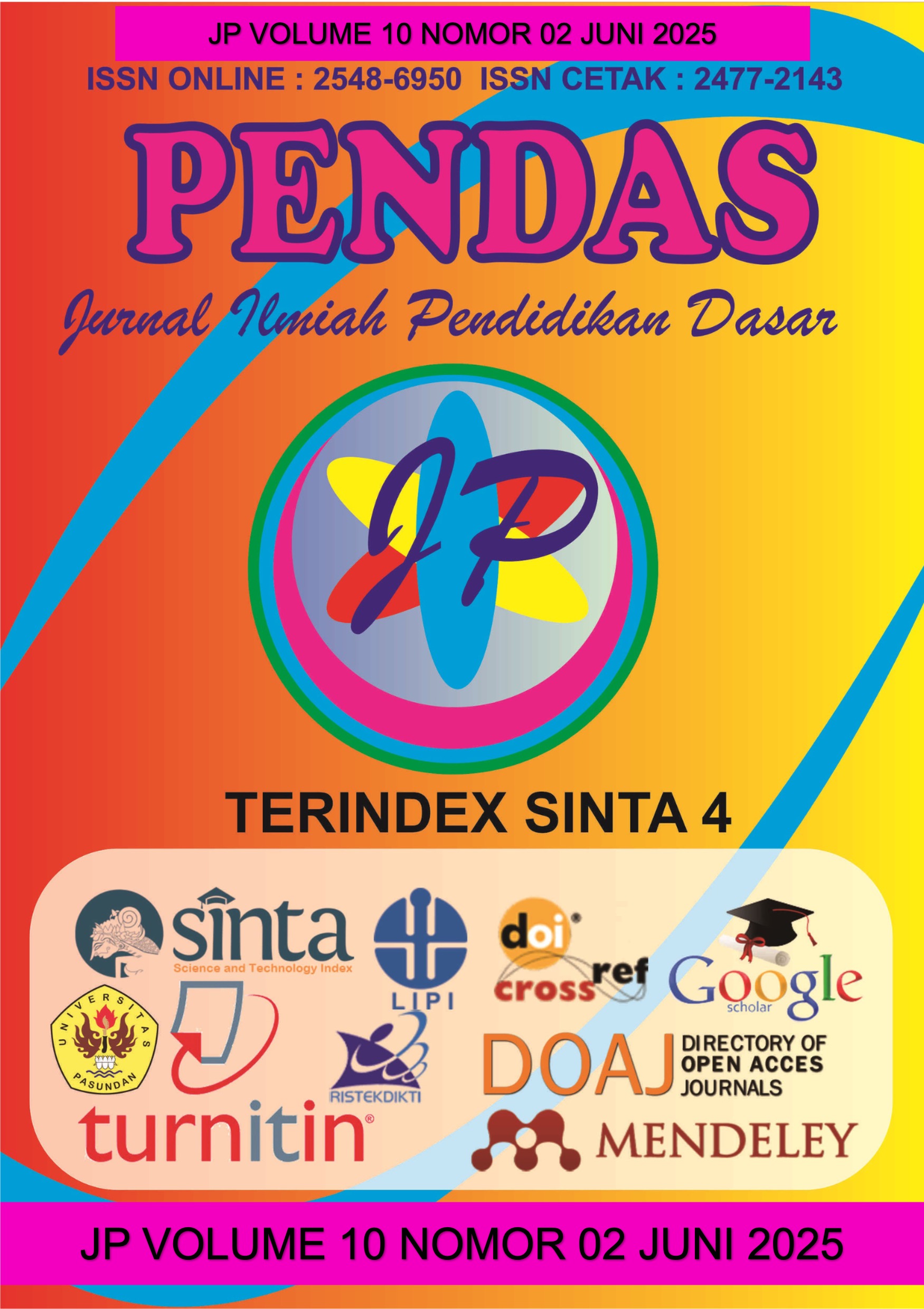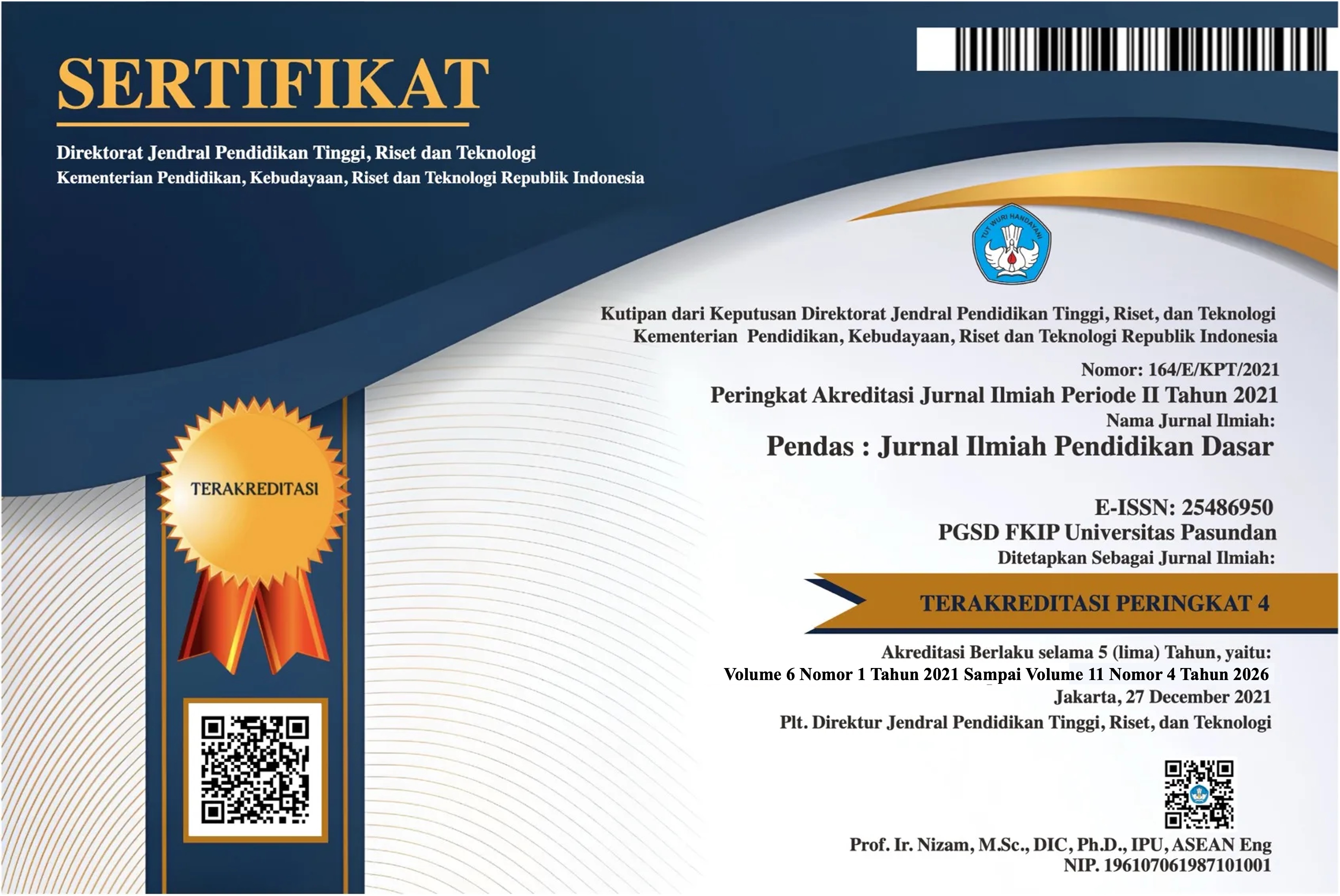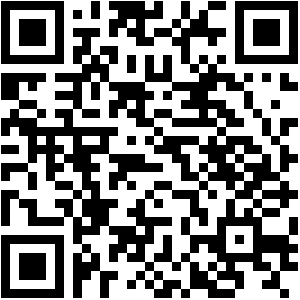ANALISIS : KESULITAN SISWA DALAM MEMAHAMI SISTEM ORGAN MANUSIA DAN IMPLIKASINYA TERHADAP PEMBELAJARAN IPA
DOI:
https://doi.org/10.23969/jp.v10i02.23982Keywords:
problems, science, learning media, solutions, and mix methods.Abstract
Education is a fundamental process in the development of individuals and society. Through education, knowledge, skills, values, and attitudes are transferred from one generation to the next, enabling intellectual, social, and emotional development. The purpose of this study was to determine the problems related to materials that are considered difficult and how to solve these learning problems in science learning in elementary schools. This research method uses a mix-method research type where quantitative data is reinforced with qualitative data. This study involved two science teachers and 25 fourth-grade elementary school students. The instruments used included questionnaires, interview sheets, and observation sheets. Data were collected by going directly to the field and analyzed using descriptive analysis for quantitative data and analysis of interview results for qualitative data. The results showed that there were two materials that were considered difficult by fourth-grade elementary school students, namely the Human Organ System (40%) and Photosynthesis (36%). The solutions used for the Human Organ System material usually use learning video media and e-learning platforms as supporting media. Meanwhile, for the Photosynthesis material, the solution provided was the use of practical demonstration tools and a digital microscope. The conclusion of this study is that video learning media, e-learning platforms, practical demonstration tools, and digital microscopes can be alternative solutions in helping students understand material that is considered difficult.
Downloads
References
Brown, A. (2018). E-learning in Science Education. Journal of Educational Technology, 12(4), 567-580.
Clark, R., & Mayer, R. (2016). E-learning and the Science of Instruction. San Francisco: Pfeiffer.
Dewey, J. (1916). Democracy and Education. New York: Macmillan.
Freire, P. (1970). Pedagogy of the Oppressed. New York: Continuum.
Harlen, W. (2001). Primary Science: Taking the Plunge. Portsmouth: Heinemann.
Hwang, G. (2012). Effects of Technology-Enhanced Learning in Science Education. Educational Technology & Society, 15(4), 223-236.
Johnson, R. (2017). The Role of Visual Media in Science Education. Educational Technology Research, 65(2), 234-248.
Lee, H. (2019). Digital Microscopes in Science Learning. International Journal of Science Education, 41(5), 678-690.
Osborne, J., & Dillon, J. (2008). Science Education in Europe: Critical Reflections. London: Nuffield Foundation.
Smith, J., et al. (2015). Challenges in Teaching Human Body Systems. Journal of Science Education, 45(3), 123-135.
Zhang, Y. (2020). The Impact of Technology on Science Education. Computers & Education, 150, 103-115.
Downloads
Published
Issue
Section
License
Copyright (c) 2025 Pendas : Jurnal Ilmiah Pendidikan Dasar

This work is licensed under a Creative Commons Attribution 4.0 International License.



















